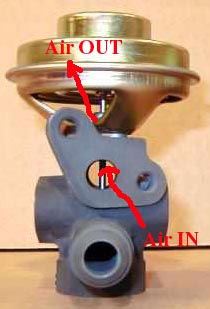Finding Vacuum Leaks
Let me start by saying thanks to Spongerider on tt.net that suggested this method.
This is by far the best
method to look for leaks in the intake system.
You are checking all the hoses and seals at once!
Preparations:
You need to block the intake pipes right after the filter.
You can either plug the both metal pipes that the intake T-hose attaches to or use the
T-hose and plug its inlet.
Gotta use your imagination here. I plugged the T-hose by using the MAF-dummy that came
with the dual POP upgrade.
I attached a wooden plate with sealant, where the filter used to be and used the screw
holes to hold it in place.
Remember, there will be a lot pressure there so you can't use a thin plate to block the
opening.
Here's my setup:
Next. you will need a good place to attach the air compressor (or some other source of
air/gas pressure) to.
I bought a snap-on fitting with threads and a nut at the other end and installed it in the
middle of the plate that I blocked the intake with.
You can of course tap into the intake system wherever you find it easy.
Testing:
Do this after driving for a while as the heat makes the rubber hoses softer, so the air
can escape easier through the leak.
Pump up the intake system by raising the pressure slowly.
Don't overpressurize the system!! You are putting a pressure on the oil in the oil pan as
well, remember that!
It's best to use a pressure regulator (often standard on the air compressors with tanks).
I found that 3psi(0.2bar) was enough to hear the air escaping through a leak.
Now just listen for leaks. In places where it's hard to reach with your ear, use your
finger, wet finger...
F.ex. I heard a leak around the EGR somewhere. You probably know how tight it is down
there. When I've put my wet finger
under the EGR membrane, I could feel where the air was escaping from.

It was the EGR valve which was NEW! I think that the EGR-valve design is to blame so don't
get alarmed by this. I've heard of several people with
this problem. The air is escaping around the rod that goes down from the membrane. The
seal around the rod in not enough to keep the air
from escaping. The hole is small though so it's nothing compared to what the engine is
consuming at boost.
At higher boost levels you will hear a shhhh sound from there though... I blocked the EGR
system off, but I'm not recommending this to anyone.
Do it at your own risk.
You can also use a bit of a hose to listen for leaks. Put one end in your ear and the
other one where the leak is.
Now go and blow up your engine...literally speaking of course :-)
Good luck!
Maciej